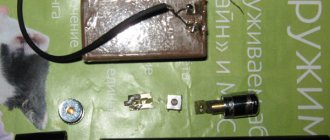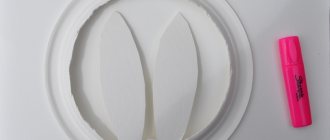Test or how to use
Weeding is faster and easier
The entire load falls on the wheel and hoe. Weeds are removed by forward movements of the device. If cutting the roots of the weeds did not work with the first movement, then repeat it and move a little forward and continue cutting the weeds.
Pruning is easier than loosening and removing weeds by the roots. The pruning method allows you to move between rows and cut off new weed formations in a short time. It is recommended to walk once or twice a week - this is a walk without much effort.
How to make a wheel hoe
Device for effective weeding
10 Total Score
Device for effective weeding
Did our article help you?
10
Method of growing potatoes without weeding
Particularly radical adherents of green farming argue that potatoes should not be weeded at all without damaging the future harvest. At the same time, this method was invented back in the 19th century and is actively used by some agronomists. This method also involves weed control, but it comes in a different form.
To grow potatoes without weeding, the soil is prepared in the fall. To do this, it should be cleared of weeds in advance, dug up or plowed, but without loosening, so that the soil can breathe better. After this, humus mixed with ash, urea, nitrogen and potassium fertilizers, which are destructive to Colorado potato beetles and other pests, is added to the soil. The top of the area is covered with a thick layer of straw.
During the autumn-winter, the straw will rot, preventing pests and weeds from penetrating the soil, forming a layer of natural mulch. Sprouted potatoes are planted without removing this mulch, fertilizing the holes with pre-prepared humus.
After germination, a layer of mulch prevents the appearance of weeds, maintains a favorable soil temperature and retains moisture.
Important! Instead of straw, you can use green manure (alfalfa, rapeseed, peas and other legumes), which are sown in advance in August. By September-October they form a fairly tall grass cover, which is mowed for the winter
Thus, mulch is obtained from hay grown in the same area.
Thus, weeding potatoes is an integral part of agricultural technology for growing potatoes, although there are growing methods that do not involve weeding. There are also many devices for weeding potatoes - from traditional manual ones to mechanized ones. Undoubtedly, the use of modern mechanized tools greatly facilitates and speeds up the process of weeding potatoes.
Types of hoes
The working blade of a classic universal hoe is made in the shape of a trapezoid, the wide edge of which is the cutting edge.
To make soil cultivation easier, you can use several more types of tools:
- hoe - a semicircular cutting edge (in the form of a halberd);
- drop-shaped, wedge-shaped working blades, well suited for harrowing or processing dense soils;
- Dutch - with a hole in the canvas;
- weeder - in the form of a pitchfork. The roots of the weeds are not cut, they turn outward.
To break up clods of earth, it is convenient to use a “dragon” type hoe, which instead of a blade has a powerful trident surrounded by a pointed bracket.
For loosening and weeding, some summer residents use electric hoes (rotary). They are convenient for weeding soft soil, picking moss from the lawn, and mixing fertilizers.
Description of design
Hoes are an indispensable tool for creating irrigation furrows before watering with your own hands, rather than with automatic watering. An indispensable tool for hilling plants, since with the help of a long handle you can loosen the most remote areas. A summer resident's kit always consists of several types of gardening tools, for example, a hoe and its hybrid (hoe, ripper), both factory-made and assembled with your own hands.
Garden hoes are made in different variations, which allows you to easily do a wide variety of work on a good site. Depending on the required work, choose a hoe with different blade widths, with pointed or rounded corners, trapezoidal or triangle shaped.
The material from which a hoe is often made is carbon steel. This material is easy to sharpen with your own hands, but it is most susceptible to corrosion. To ensure that such a tool serves you as long as possible, after each work in the garden, thoroughly clean any remaining soil and grass from the blade, and then lubricate it with oil. Stainless steel hoes are more popular among summer residents, since stainless steel is more durable and requires simple maintenance. The only negative is the price.
The difference between the hoe-ripper hybrid and the classic type is the presence of non-curved ends, with which you can easily weed out weeds from creeping plants.
What is the difference between a hoe and a hoe?
Both a hoe and a hoe perform the same functions, but a hoe is a subtype of a hoe, although it has been known to mankind as an independent tool for much longer.
Still, these are two different weapons, the main difference between which is the shape and size of the blade.
So the hoe is equipped with a wide, low blade and a straight cutting edge for fighting weeds.
The classic hoe has a narrow but high working part (vertical), while more modern models have a high and at the same time wide blade, sometimes concave.
The thickness of the blade of a hoe is noticeably thicker and more massive than that of a hoe.
All these factors allow you to effectively work with the soil, that is, make furrows and holes for sowing, hill up plants, and so on.
This is especially true for triangular sharp models.
Weeding trimmer attachments
For work, it is recommended to use a factory-made cultivator attachment. This is both easier and cheaper than making the device yourself. When selecting, it is recommended that you first take your trimmer and measure:
- rod diameter;
- number of splines on the shaft.
This information will allow you to choose the right nozzle. Typically, the description of the nozzles indicates the outer diameter of the rod - 26 or 28 mm and the number of splines on the shaft - 7, 9, or the cross-sectional shape of the end - square. To accurately select the right size, you should also measure the diameter of the shaft itself - they also differ in size, there are shafts with a diameter of 7, 8 and 9 mm.
If you are using a branded tool from well-known world brands, and not Chinese consumer goods, then it is better to order a branded attachment. This will extend the life of both the attachment and the brush cutter. In Moscow, for example, it is worth visiting branded stores, where professionals will select the nozzle; here you can also consult on the procedure for servicing the units.
To work on small areas, a regular disc cutter will be sufficient, but for large areas it is better to use reciprocating and drum cutters.
It is recommended to sharpen the cutters before each use.
When selecting a working tool, you need to focus on the dimensions recommended by the manufacturers. The hand will not be able to hold the blades that are too large, and the blades that are too small will not cope with the task. If you can select several sets of cutters for a cultivator, then you should consider purchasing cutters of different diameters - this will allow you to choose a tool for each specific type of task.
Practical advice on choosing hoes
The most practical equipment will be made from stainless steel. You don’t need to take care of such a glanders, but there is one drawback - the price is steep. Cheaper hoes are made from steel containing carbon. Steel is easy to sharpen, but it quickly rusts if not handled correctly. After work, steel hoes must be cleaned, lubricated and stored in a dry place.
The smaller the weight of the hoe, the easier it will be to use.
Regarding the handle, traditional wooden handles will be the most convenient. Some people prefer plastic or aluminum cuttings. However, they can bend, unable to withstand the “fight” with a particularly overgrown weed. But it is better to avoid metal cuttings - they are too heavy, although they are the most durable.
The longer the cutting, the less strain on your back will be when processing large areas. But you need to focus on your height - a handle that is too long will only get in the way. For removing weeds in compact flowerbeds planted with flowers, a hoe with a short handle is more suitable.
Is it worth making a cultivator attachment yourself?
The technology for caring for vegetation will also change: first, use a knife attachment to walk through the beds, cutting off the grass, and only then use a cultivator attachment.
Having decided to make your own cultivator attachment for the trimmer, you should first evaluate the following:
- The design of the output section of the boom: if it is a flexible shaft, then you will have to forget about the cultivator: it will not withstand the constantly changing amplitude of torques. The cardan transmission is more functional, and the most successful design is considered to be a multi-slotted rod, and a straight one, not a curved one.
- Drive power: If it is less than 1000W, the motor will overheat and the cultivation performance will drop sharply.
- Fuel tank volume: energy consumption will increase significantly, since the cultivator attachment will have to be made from scrap materials. Therefore, the tank must contain at least 1 liter of fuel.
- Handle design. Ergonomics experts believe that the most comfortable is the T-shaped handle, which provides the most accurate and reliable direction. The J-shaped handle common in some models makes it difficult to hold a gasoline trimmer with a cultivator attachment.
If the existing trimmer meets the listed requirements, and its owner has sufficient experience in performing such work, then it is quite possible to make a disk attachment with your own hands. As for gear-type nozzles, making them yourself is very labor-intensive and will not provide the desired quality.
Deadlines and ground rules
The area is cleared of weeds several times a season.
It is especially important to do this until the time when the vegetable crop has become so strong that it can defend its rights to full growth.
The first time weeding should be done approximately 15-20 after planting. Weeds grow much more actively than potatoes, so it is necessary to remove competitors and allow the vegetable sprouts to strengthen.
If the tubers were planted sprouted, then seedlings will appear quickly and during the first weeding, the potatoes will be easy to distinguish from other vegetation. In the case where the planting was done with unsprouted tubers, the emergence of vegetable sprouts will be late and weeding must be done very carefully.
The next weeding should be done before flowering begins. It can be combined with hilling. This will be in early July. It is necessary to thoroughly clear the area of weeds. Since in the future it will be difficult to use different mechanisms for weeding potatoes, and removing grass by hand is very difficult.
How to use a trimmer for weeding potatoes?
Not all gardeners choose this device, believing that it is better to pull out weeds with their hands, but there are also those who claim that it is very convenient. The device for weeding potatoes with a trimmer allows the use of several different attachments, which can be included in the kit or can be purchased separately. A good option is to make the nozzle yourself from available materials.
Lawn mower attachment for weeding potatoes
To remove weeds between rows, in most cases a trimmer head with a line is used. Experienced gardeners recommend choosing a fishing line with a round cross-section, so that weeds will not grow back so quickly. When describing attachments for weeding potatoes on a gasoline trimmer or on a device powered by electricity, it is worth mentioning another option - a three-blade knife, but it should be taken into account that if the unit hits stones, it will break. There are also specialized attachments with four cutters.
Homemade attachment for weeding potatoes on a trimmer
There are several options for making attachments, for example, you can make a “three-layer” blade. Homemade devices for weeding potatoes involve the use of a piece of tin 5 mm thick. Three circles of different diameters should be drawn on it: 320, 220 and 110 mm. Use a cutter to cut out circles and make holes in the center of each to insert the operating shaft. Using welding and reinforcement, connect the discs at a distance of 1-2 cm from each other. All that remains is to weld the nails to the disks and you can use them. Other interesting options for attachments are also possible.
How to do it yourself
Today you can easily buy the necessary garden tools at any specialized store. But if you are a “homely” summer resident and like to do everything with your own hands, then why not make a hoe yourself.
So, let's look at how to assemble garden tools from scrap materials with your own hands. For the handle, you can use any long stick from the available tools, and for the blade, you can sharpen any hardened metal from what you have in the shed and is no longer quite working.
Device for cutting weed roots
Anti-weed cultivator
“No matter how much you weed, they still climb” is the eternal complaint of any gardener. Maybe it's time to try another method of controlling the weed - cutting down its roots. It takes less effort, and the back is less stressed. For this purpose, many devices have been invented, one of which is brought to your attention.
For this you will need:
- Bicycle fork and small diameter wheel - for example, from Salyut
- Wood hacksaw - needed for making a cutting structural element
- Some sheet iron - approximately 30 x 15cm
- Metal round and profile pipe
- And other metal - strips, rods and corners
Basis of the device
There are no clear sizes - everything is made to individual requirements.
Tools you will need:
- welding inverter
- Bulgarian
- and other locksmith tools
Step No. 1 - prepare the bicycle fork
Preparing the fork - the basis for attaching the “hoe”
Two metal plates need to be welded to it. You need to cut the steering column tube off the fork. The dimensions are taken from the fork and transferred to the metal. After the plates are cut, they are welded to the bicycle fork as shown in Fig. 3.
Step No. 2 - making the steering wheel
Steering wheel of the weeding unit
Two pipes need to be welded to the fork, which will control the weeding unit. The main thing that needs to be observed is the horizontal position of the fork from the bicycle.
In the photo above you can see one of the many ways to attach the steering wheel.
Small sections of pipe can be welded to a bicycle fork into which a handlebar made from wooden cuttings can be inserted. This design will be lighter and therefore more efficient.
Step No. 3 - making a hoe
Making a cutter
1
We will make the cutting element from a hacksaw blade for wood. It is optimally suited for this purpose - durable, flexible, memoryless, and holds an edge well.
2
We cut a plate about 5 cm wide and about 30 cm long from a hacksaw blade.
3
We weld two metal strips to it along the edges - this will be the attachment to the fork of our device.
4
Don't forget to sharpen one side of the plate using a hacksaw. Although this can be done when the device is completely ready.
Step No. 4 – fix the hoe on the wheel
Installation of the cutting part of the weeding device
We weld a U-shaped piece from a hacksaw on the bottom of the fork as shown in the photo above. We sharpen it if this has not been done before.
If you fasten the hoe with a bolted connection, then you can make a whole series of hoees of different shapes for different purposes.
How to get rid of weeds in your summer cottage forever: using folk remedies, chemicals and other methods | (Photo & Video)
Option No3. Metal plate hoe
We offer a fairly simple device instead of a regular hoe, which can greatly facilitate weeding the garden. In our example, the flat cutter is literally made from scrap metal, but you will be surprised how useful it will be!
Step 1. A metal plate 30-40 mm wide is taken and a working knife is prepared from it.
Working knife of the future chopper
Step 2. A workpiece 200-250 mm long is cut, one end is sharpened.
Step 3. For sharpening, you can use emery or, alternatively, a grinder with a grinding disc.
The workpiece is being sharpened
Step 4. The metal is cleaned of rust, as welding work is to be done.
Metal needs to be cleaned of rust.
Step 5. Next you will need some scrap metal rod. These can probably be found in any household.
Metal rod scraps
Step 6. A pair of segments are cut (each length is 400 mm), after which they are bent in a zigzag towards the center (see photo).
The segments are bent What happened in the end
Step 7. The trimmings are welded to the knife so that it ends up at a slight angle relative to the horizontal plane.
Welding the sections to the knife The knife should be at an angle
Step 8. The bent scraps are combined with the pipe scrap, and the resulting joint is welded.
The curved rods need to be combined with the pipe. The connection is scalded. This is what happened in the end
Step 9. You can also weld a transverse handle to the end of the handle. Well, you can start testing the tool. Place the flat hoe on the ground with the weeds and pull it towards you. Well, how is it working out?
Testing our flat cutter Weeds are cut perfectly at the root
The knife is sharp enough, and therefore the weeds will be cut at the root. A very convenient and lightweight replacement for the classic bulky hoe!
Video - Circular disk hoe
Mechanisms for weeding potatoes
It cannot be argued that there is an ideal mechanism for weeding potatoes that would satisfy the needs of any farmer
Therefore, in order to correctly select the right mechanism for weeding potatoes, it is important to know about the existing mechanisms and the cases in which this or that mechanism or attachment for it is used. In the video below you can learn how to weed potatoes using a walk-behind tractor
Walk-behind tractor with rotating cutters
A walk-behind tractor is a multifunctional mechanism that, depending on the type of attachment, allows you to perform operations such as cultivation, weeding, milling, transporting small carts, and digging up root crops.
The main components are the frame, engine, transmission, operating shaft and guide handles. In addition, there are various attachments that perform a specific function. Walk-behind tractors run on an internal combustion engine, and they come in two- and four-stroke types.
Important! Motoblocks with four-stroke engines are more powerful and more fuel efficient.
For mechanized weeding (cultivation), a special attachment is used - a milling cutter. It consists of a series of sharp star-shaped plates that fit onto the operating shaft. As they work, they rotate, grinding and pulling weeds out of the ground. The same nozzle is suitable for mixing organic fertilizers with soil.
Walk-behind tractor with pointed feet
Another attachment for a walk-behind tractor suitable for weeding potatoes is pointed paws. The attachment is a frame to which small V-shaped plows are attached. When weeding, the plow blades should be deepened 2-3 cm into the soil using the attachment.
The method of weeding is cutting weeds. Allows you to perform high-quality weeding in a small amount of time. The advantage of the paws compared to a milling cutter is that the paws are gentle on the soil, do not turn out its wet layers and do not form dense clouds of dust during operation.
Weeding potatoes with a trimmer
We have already discussed the effectiveness and rules of weeding potatoes with a trimmer. At the same time, the structure of the trimmer and attachments is so simple that you can make attachments with your own hands. At the same time, the lawn mower will not lose its effectiveness, but on the contrary, it will be more gentle on the beds.
How to choose a comfortable hoe
The speed of work directly depends on the quality of the chopper. You should choose according to several parameters.
The most important thing is the material. Soft metal products will bend and break. A high-quality, durable hoe has a working part made of carbon steel, and a handle made of metal or fiberglass-reinforced polyamide.
Choppers with an insert blade (a strip of metal, not a solid bent blade) are trustworthy. This means that the material is of high quality and is used sparingly.
The most reliable tool is a heavy forged metal hoe. Such tools are characterized by increased strength of the working surface. Forged steel does not deform and allows for processing dense clay soils. During forging, the structure of the metal changes from crystalline to fibrous. There are no cracks or bubbles in this fabric. Forged steel is commonly used by German, Finnish and Dutch manufacturers.
The second important parameter is the thickness of the blade. The sharper the cutting edge, the easier it is to work. The optimal thickness should be 1-2 mm. The thick edge does not penetrate the soil well. Clay soil will be especially difficult to process. Most models for sale have a 5-10mm blade. Experienced gardeners trim or sharpen them.
Hoes with blunt cutting edges can be used without sharpening on sandy soils. The width of the working surface is selected depending on the type of soil being cultivated and its purpose: for clay - up to 80 mm, for flower beds and beds - no more than 120 mm, for hilling potatoes and loosening the soil in the garden - up to 300 mm. You should also pay attention to the length of the handle. For a hoe, it should be such that you do not have to bend your back too much.
Rules for weeding with a trimmer
The rules for growing potatoes provide for several operations - continuous cultivation until the potatoes have sprouted, weeding the rows, hilling the bushes.
For simple cultivation, drum cutters are used; for weeding, you can use disk, saber, or drum cutters. But for hilling it is better to make a stacked structure - make the internal cutters of a larger diameter, and the outer cutters of a smaller diameter. This design ensures ease of use of the tool when hilling under a bush.
Weeding rules are quite simple:
- a sunny day is chosen for work, so that the weeds dry out in the sun as quickly as possible;
- For protective equipment, you should wear goggles and a respirator, and for shoes, boots;
- when working, as well as when mowing grass, it is recommended to use a shoulder strap;
- weeding is carried out with a deepening of 1-1.5 cm, this is enough to loosen the top layer and increase gas exchange in the soil;
- It is recommended to weed the entire row spacing until the plants rise to a height of 10-15 cm;
- Weeding is done in a zigzag, the nozzle is first moved to the left, and then at an angle to the right. The next move to the left, taking over the next lane.
- Hilling is done to a depth of 10-12 cm, with the first movement being forward in the center of the row spacing, and after that, turning the nozzle left and right, a mound is formed near the bushes.
- It is recommended to select the operating mode with short breaks so that the trimmer has time to cool down;
- At the end of the work, the nozzle must be cleaned, unscrew the screws of the technological holes and add molybdenum grease to the gearbox.
Timing for weeding potatoes
Potato seedlings, as a rule, appear after 2-2.5 weeks, at the same time, the appearance of weeds on the site can be observed already 5-6 days after planting the potatoes. Therefore, weeding should be carried out from now on. For the first weeding in an area with a smooth planting, it is better to use a hoe or flat cutters, since the rows are still difficult to see and there is a risk that the trimmer or harrow will cut off the potato sprouts that have not yet broken through to the surface. If the potatoes were planted using a mechanized method with cutting the ridges of the beds, trimmers and walk-behind tractors can be used for weeding. After the first weeding, its further frequency is determined independently, based on the rate of weed growth. On average, the frequency is once every two weeks. When the potato bushes get stronger and become such that it is impossible to walk between them, weeding is not required.
Choosing an electric chopper
Models with smooth pins (fingers) are preferable. They do not cut the roots of weeds, but pull them out of the ground, wrapping them around themselves. During treatment, the grass is completely removed, which prevents its reappearance for a long time.
Smooth pins do not damage the leaves of cultivated plants; you can weed densely planted beds. Models with electronic overload protection are more durable. If the soil is too dense, the engine stops. The blocking is removed after a few minutes. Models with movable working disks are more functional. This allows the pins to bypass large roots and rocks without stopping the engine. The soil is loosened in several directions at once.
When choosing an electric hoe, you should also pay attention to the width of the area being processed. The working surface can cover 10, 20, 30 cm. For loosening beds and flower beds, models with minimal coverage are preferable.
Electric hoes with adjustable (telescopic) handles are more convenient to use - you can precisely adjust the height to suit your specific height. Such models are convenient to store and transport - the handles fold up to half a meter, the shield and battery are removed.
The choice of hoe model depends on the preferences of the gardener and the type of soil. Modern developments not only make soil care much easier, but are also relatively affordable. If the operating instructions are followed, they will last a long time. To be on the safe side, many summer residents use electric rippers after cultivating the soil with a classic hoe - as a means of maintaining order on the site.
What is the device?
In the set of replaceable attachments for brush cutters, manufacturers have recently increasingly begun to mention such a device as a cultivator or weeder. Unlike classic attachments in the form of disks for mowing grass or a mowing head for synthetic fishing line, the cultivator is designed to work directly with the soil. The trimmer attachment is designed to loosen the soil in cultivated areas and partially in places where there is turf cover.
The attachment on the trimmer for weeding potatoes consists of
- from a housing with a worm mechanism;
- and the working body - disk, reciprocating or drum milling attachments.
The weeding trimmer attachment is attached to the rod instead of the lower gearbox. Conversion of a trimmer into a weeder is carried out within 1-2 minutes and does not require additional tools and equipment. The entire process is carried out using hex keys included in the brush cutter tool kit.
Using a brush cutter makes weeding much easier
The device body is collapsible. The housing contains special devices for adding lubricant. The body material is aluminum alloy, the cutters are made of steel. The shaft on which the cutters are installed is forged steel, the gear is bronze.
The principle of operation of the trimmer is simple - from a two-stroke engine through the clutch, rotational motion is transmitted to the shaft in the rod. Further, through the shaft, the movement enters the connecting shaft with a worm mechanism, from which the working shaft with cutters begins to rotate through a bronze gear.
The speed of the cutters is adjusted by adjusting the engine speed through the throttle handle - the more the carburetor damper opens, the higher the speed of rotation of the cutters.
Cultivator attachment for trimmer
Automatic chopper
An electric hoe (electric hoe) is designed for shallow loosening (maximum 15 cm, but generally no more than 10-8 cm) of already cultivated soil in areas that are inconvenient to cultivate with a cultivator.
Device
Externally, the tool is similar to a grass trimmer: a long bar with 2 arms and a motor at the bottom. The working part is different from a regular hoe. It consists of one or more disks in which several pins (the ends of some models are rounded) or steel plates with sharpened edges are located at right angles.
The effect of loosening the soil is achieved due to their oscillation around their axis thanks to the crank mechanism of the engine (half a turn in one direction and half a turn in the other). In this case, clods of earth do not fly apart - the working part is covered with a shield. Instead of pins there may be cutters. This hoe resembles a mini-cultivator. Provides surface treatment without turning up weeds.
Electric choppers are started and turned off by a button. Operates from a power outlet or battery. There are also petrol models, but they are extremely rare on sale. The battery is small, removable, and is located under the top holder. A charger is usually included in the package. The battery lasts on average 30 minutes of continuous operation. It will take 8 hours to fully charge. The 18V battery will charge in 3 hours. There are devices that restore the battery's potential in 1-2 hours, but they must be purchased separately.
Functionality
The electric hoe is convenient to use for the following purposes:
- loosening, mixing the soil to remove the surface hard crust;
- harrowing already cultivated land;
- weeding;
- treatment of tree trunk circles to ensure air exchange of roots. Allows you to qualitatively loosen the soil even under spreading bushes.
Electric hoes are suitable for leveling the green edges of beds and flower beds. Models with cutters are especially convenient for this.
You can use an electric hoe to mix compost and other fertilizers into the soil, and also to comb moss out of your lawn (without submersion).
Advantages and disadvantages
Advantages:
- the earth does not turn out in layers, but is loosened. Each layer remains in its place, and the weeds are easily removed;
- safety: the maximum harm that an electric chopper can cause is scratches;
- an electric hoe allows you to work with a straight back;
- light weight. Professional models weigh from 2.5 to 4.6 kg (battery);
- low noise level;
- easy to launch. No cord pulling required;
- ease of care. No need to add fuel or oil;
- There is no forward movement - you can clearly limit the contours of the treated area.
The main disadvantage of an electric chopper is low productivity. Not much more than a manual one, but it processes the soil better.
Battery models have a relatively short period of continuous operation, while wired models do not have a long enough cord.
How to weed potatoes with a trimmer
There are various methods of weeding potatoes - from traditional manual weeding to mechanical weeding. Each of them has its pros and cons, and experienced specialists say that the best effect is obtained if these methods are used in combination. The main tools with which you can weed potatoes include a trimmer (motor scythe) and a hoe.
A trimmer is a brush cutter that is powered by electricity or combustion of fuel (gasoline, diesel fuel). Fishing line, plastic or metal knives, and milling cutters are used as cutting tools. The advantage of the trimmer is the speed of weeding the potatoes, which cannot be achieved with manual weeding. At the same time, it is impossible to hill up potatoes using a brush cutter alone.
Important! It has been noticed that if you use a rounded fishing line in a brush cutter, rather than a faceted one (star-shaped), the results of weeding will last for a longer time, since the weeds grow more slowly after such treatment.
The trimmer is used primarily by fans of organic farming. They believe that it is impossible to hill up or loosen the soil too often, and even more so - to take cut plants from the garden, since the nutrients that they managed to get from the soil are taken away with them. On the contrary, supporters of organic farming believe that weeds cut with a trimmer should be left in the garden. At the same time, they perform the following functions:
- act as mulch, prevent further weeds from growing for a long time and retain moisture;
- attract worms and microorganisms that process weeds into nutrients, thereby fertilizing the soil.
Weeding with a trimmer should be done when the weeds are still small in size and can be easily cut with a knife.
At the same time, it is important to follow these weeding rules:
- You should work in a respirator and safety glasses, since when the trimmer operates, dust is formed and small pebbles fly around;
- you cannot work when other people are in front of the trimmer;
- The trimmer blade can be deepened into the ground no more than 1-1.5 cm;
- You can work with a trimmer when the first potato shoots appear, otherwise there is a risk of cutting them off;
- if the trimmer is low-power, you should take a break every 10-15 minutes to allow the engine to cool down;
- at the end of the season, the blades and working surfaces of the trimmer must be treated with fungicides, as there is a risk that pathogens of potato diseases remain on them.
Rules for care and use
Without proper care, the working surface of the hoe will rust, will not fit into the ground well, will lose strength and eventually break.
To extend the service life, a number of rules must be followed:
- every time after work, clean the canvas or teeth from the soil using burlap or a bunch of grass;
- when storing, the working surface must be washed, lubricated, wrapped in newspaper and protected from moisture;
- Do not use the hoe for purposes other than its intended purpose: cutting roots, chopping ice.
The working surfaces of high-quality hoes have an anti-corrosion coating, but this does not eliminate the need to care for the tool.
Electric hoe care
An electric hoe is not intended for digging up hard soil; there are cultivators and a shovel for this. Under heavy load, the device can burn out, and in some cases the bearings crumble. It is inconvenient to work in too wet soil - the pins stick together and their mobility deteriorates. You will have to constantly stop the hoe and clean it. It is also not recommended to work in wet grass.
During operation, the electric hoe should be held with both hands and away from your feet. Do not get too close to plant trunks or immerse the working part at an angle to them. After work, the rods must be cleaned of soil. The electric hoe should be stored in a relatively dry, ventilated area.
Recommended mode: 20 minutes of loosening, 20 minutes of rest. In extreme heat, when working in the sun, you can reduce the operating time.
Pros and cons of the method
Weeding a garden with a trimmer, and especially the area where potatoes grow, has its own characteristics and specifics.
First of all, you need to pay attention to the fact that you need to choose the right tool for the job. It is preferable to choose powerful four-stroke engines as a working engine.
Such brush cutters have lower gas consumption and greater productivity compared to two-stroke ones. For two-stroke engines, the recommendations boil down to choosing a higher engine power; the more powerful the engine, the more efficient the work.
Weeding potatoes, unlike making hay or mowing the lawn, is a more labor-intensive process, so you need to be prepared for the fact that after work not only your back, but also your arms and legs will hurt. The fact is that during work you will have to keep the nozzle suspended, preventing the lugs from completely burying themselves in the ground. In addition, you will have to move the unit along the surface from right to left, which also requires significant effort.
But from an economic point of view, such potato weeding will be much more effective than manual weeding - in a season, using a cultivator, you can cultivate a much larger area than with your hands. In this case, repeated processing will be required after a longer period of time.
Alas, there is also a minus. This is a lot of gas mileage. In normal mode, gasoline consumption is usually 0.44-0.92 liters of combustible mixture per 1 hour of operation of the unit, depending on the design and type of engine. With the device installed, this figure increases by approximately 35-40%. So you have to choose either saving time and quality of work or saving money.
Cultivator attachment in action
Such different names
By and large, a modern hoe and a hoe are the same tools, differing only in the width and length of the blade. The essence and features of this device have remained unchanged since the Paleolithic.
Depending on the area, the stone hoe was slightly modified. First of all, it depended on the type of soil, as well as on the varieties of crops grown. But it was always a tool with a pointed end and a wooden handle that fit comfortably in the hand.
Based on the fact that the details and dimensions of this device were surprisingly similar among many peoples, we can conclude that the hoe is a universal, ideal tool for cultivating the soil.
Making a hoe from a piece of tin
If you don't have a bad shovel or saw, you can use an ordinary piece of metal as a blade. Strong steel, about 2mm thick, is best so that the work area has a solid weight. It should be remembered that the iron must be sharpened well, since with prolonged use, sooner or later this will have to be done. Let us now move directly to the manufacturing process.
It is best to take a rectangle, 7 by 25 centimeters - this is the ideal size; with such a blade it will be very convenient to process row spacing. We make the cut straight, not at an angle. We grind the edges so as not to get hurt during the following operations.
Since our main task is to make it high quality and inexpensively, we won’t waste money, we bend a 25x25 mm corner and weld it to the metal.
To do this, you can use ordinary knitting wire or metal clamps (you can buy them for 3-4 rubles on the market). 2-3 such clamps will be quite enough - the cutting will not go anywhere.
Now the hoe can be considered ready, you can sand the handle and coat it with varnish, sharpen the blade with a grinder to the desired state.
These were the cheapest and simplest options for making the instrument. For those who have extra financial resources, we can advise you to buy a ready-made blade, holder and assemble it yourself, but such a tool, as a rule, costs a lot.
Any professional gardener or just an amateur will tell you that you cannot start a single gardening season without a hoe. This universal tool helps us plow the garden, get rid of weeds and care for our crops.
Tags: kitchen hatchet, do it yourself, from a saw, simple
Comments 27
I made three knives from saw blades, the first one was clumsy due to inexperience, the second one was made from a piece of a thick disk 5mm thick, the metal is a bit soft (although the disk was without soldering) it lies in the form of a blank waiting for its use, the third one was more or less a success, but it also seems a little soft, hardening yet I haven’t mastered it... By the way, I wanted to make the same cleaver, but the disk ran out))) Then, if I succeed, I’ll post pictures of the knives. Another spring from ZIL 131 is lying, waiting for its turn...
Bones for broth are definitely good!
The first photo is valid...
the knife is garbage but the main thing is the process (((
Was he boiling something out of her ass? :))))
Wrap it up so it doesn't rust.
What about the strength of steel? On which bone will the first nicks appear and will it become dull?
I sharpened it at 30 degrees, but to chop bones you would need 45-50 degrees then it’s normal, but to chop meat the knife still needs to be heavier, with a blade thickness of about 4-6 mm, but here it’s 2 mm, that’s why I sharpened it by 30 degrees, but during the sharpening process I will reduce the angle
What about the strength of steel? On which bone will the first nicks appear and will it become dull?
Source: www.drive2.ru
The best models and their prices
When choosing trimmer attachments, first familiarize yourself with the manufacturers and design characteristics
Pay attention to value for money. Monitor reviews of the model you like
We'll tell you about the best models of attachments on the market.
KAAZ Kat-MC250P
Refers to cultivator attachments. Equipped with a subsoiler. Suitable for use in small areas.
Characteristics:
- manufacturer - Japan;
- brands: trimmer ECHO PAS-Tiller Cultivator, brush cutter PAS-265ES;
- price: 9990 rub.;
- knife material: hardened steel;
- Dimensions of the working body: width – 24 cm, depth – 36 cm.
KR400MP MAKITA 195710-3
Designed for small areas. The working part consists of cutters.
Characteristics:
- manufacturer - Japan;
- brands: EX2650LH, DUX60Z;
- price: 17160 rub.;
- knife material: metal;
- Dimensions of the working body: width – 16 cm, cutter diameter – 23.3 cm.
Milling type working body
Designed for weeding, which carefully digs up the soil, facilitating the penetration of moisture and nutrients and saturating it with oxygen.
Characteristics:
- manufacturer – Taiwan;
- brands: for TAC lawn mowers;
- price: 7900 rub.;
- knife material: steel;
- power supply: petrol engine;
- weight: 5 kg;
- Dimensions of the working body: width – 18 cm, cutter diameter – 20 cm.
Practical use
A hoe is a multifunctional classic garden tool. Schematically it consists of a long handle and a working part - a metal cutting blade located at right angles to the holder.
The long handle allows you to lower the working part deeply into the ground without much effort - due to the lever effect. There is no need to bend over or squat while cultivating the soil.
Tip: to make the job as easy as possible, the cutting edge needs to be sharpened periodically. With a sharp working edge, even a light hoe easily sinks into the soil, allowing you to completely remove weed roots.
Scope of application:
- hilling up plantings;
- loosening the soil;
- cutting and removing weeds;
- leveling lawn edges;
- cutting rows for sowing;
- application of fertilizers.
Even heavy-duty tools are not designed for breaking ice or working in dry, hard soil. The edge will quickly become dull and the blade will crack.
Homemade hoe from an old saw
Nevertheless, there are times when an old hoe breaks and a new one has not yet been purchased, and the gardener has to make a tool from scrap materials. For a homemade hoe, a hacksaw blade is best suited, since this metal will withstand any load and will not wear out for a long time. However, such a tool made from scrap materials will only serve you for one season. Next time you will need to take care of a new hoe.
To make a hoe with your own hands, you should follow these steps:
- first you need to saw off the canvas to the size you need; The best size is 25 cm;
- we take an unnecessary old wood saw and finally break it down; anyway, it will no longer be useful to us for its original purpose;
- using a grinder, we will make a cut at an angle of 45 degrees, towards the teeth of the file;
- Next, you need to drill 3 holes for fastening, and the holes should be at the same distance;
- using a drilling machine, you need to make the same number of holes in the metal corner with shelves;
- the next step is to secure the holder - for this we take a thick-walled metal pipe with a diameter of 25–30 mm and a length of 25–30 cm;
- We hammer one side of the pipe with a hammer 5 cm;
- In order for the corner to stand firmly, it is necessary to drill a couple of holes;
- as a result of all the work done, we get a finished blade with teeth, and now all that remains is to fasten the handle in order to use the homemade tool for its intended purpose; You can choose any tree for the cutting, the main thing is that you feel comfortable working in the garden with this material;
- Using sandpaper or a sharp knife, we cut one edge of the cutting and insert it into the pipe;
- To ensure that the hoe handle is firmly secured, we hammer a nail into metal and wood;
- then we will work with the old saw - we need to get rid of the teeth that are not needed in the hoe; To do this, we take a grinder and level the surface of the hoe, while the teeth can be left; some gardeners claim that with them the hoe loosens wet soil better.
A hoe for cabbage or for weeding can be made, for example, from a trimmer, a scythe or cardboard. This weeder will be no worse than the purchased version.
DIY kitchen meat hatchet
DIY kitchen meat hatchet.
How to make a kitchen hatchet with your own hands. DIY camping hatchet. These instructions will help you make a good, strong, small but heavy hatchet. You can use it to chop meat, firewood, take it with you on a hike, and so on. The metal must be hardened, so that the ax does not become dull for a long time. The author used a plow from a tractor as material. Making an ax is not difficult; you can draw out the necessary profiles with an ordinary grinder. For ease of work, of course, it is advisable to have a belt sander, but this is not necessary.
Materials and tools for homemade work:
— a source of steel with a high carbon content (the author used a tractor plow); — grinder with cutting and grinding discs; — a set of files; - wood for making handles; - epoxy adhesive; - drill with drills; — it is advisable to look for material for making pins; - sandpaper of different grain sizes.
The process of making an ax:
Step one.
Hatchet profile First of all, imagine what your hatchet should be like. It is advisable to draw it on thick cardboard and cut it out. This will give you the opportunity to hold it in your hands and evaluate whether it will be comfortable. Next, we transfer the profile to the metal and cut it out. To work, you will need a grinder with a cutting disc.
Step two. Grinding and setting the blade profile
After working with a grinder, the profile needs to be thoroughly sanded in a circle, remove burrs and smooth out other irregularities. The metal here is quite thick, you won’t be able to make a serious mistake, so work only with an angle grinder.
You will also need to thoroughly sand the entire surface of the metal, as there will likely be rust, dirt, and so on. This can be done using the same grinder, installing a grinding attachment on it.
Next, you can begin making bevels, that is, forming the profile of the blade. If you want the sharpest possible ax that will practically cut rather than chop, make the bevel as far as possible. That is, the blade should be as thin as possible. And if you think about constantly chopping something with an axe, subject it to heavy loads. Make the bevel smaller.
The author forms the bevels with a grinder, although this is done more professionally on a belt sander.
To form the bevels you must first place everything on the axe. Draw a line up to which the bevel will extend, and also divide the future blade into two parts so that you are guided by this center line when working with an angle grinder.
Finally, you will need sandpaper to smooth out any rough spots left by the grinder. Files will also come to the rescue here.
Step three. Drilling holes
Before we harden the steel, be sure to drill holes in the workpiece for the pins. The author decided not to install them, but this is highly recommended, since the handle turns out to be strong, and the appearance of the ax becomes more attractive.
Even if you don't put pins, you will still need to make holes, since thanks to them the handle will stick well.
Step four. Metal hardening
If you need a really strong ax, harden the metal. It will be problematic to heat such a piece of iron to a bright yellow color; you will need a powerful oven. However, you can try to harden only the blade. The author uses goal for such purposes. The author cools the metal in water.
In general, the hardening method described above is questionable, since not all of the metal is heated, and no one tempers it. It is recommended to use oil instead of water, since water cools the steel very quickly, and this can cause the workpiece to crack or become deformed.
Source: oleor.ru











